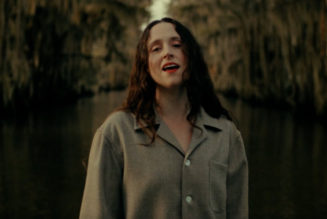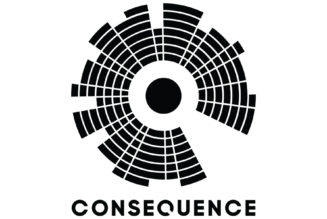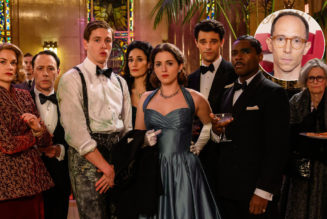Maybe you love the Fast & Furious moves, or perhaps you’ve never forgiven them for that reference to the “MoTeC exhaust”—but either way, it’s impossible to deny the impact the movies have had on society and car culture. With 10 films, including this year’s Fast 9, Fast & Furious is one of the most successful franchises in Hollywood history. It’s been 20 years since Brian O’Conner moseyed into Toretto’s Market and Café for a tuna on white with no crust, and the car world has never quite been the same.
MotorTrend features editor Scott Evans well remembers the impact of 2001’s The Fast and The Furious: “The buzz was everywhere. Even in my small California town, everyone had heard about this new street racing movie. I went to the theater and couldn’t believe my eyes—I’d never seen so many modified imports in one place [as were in the parking lot]. The line to get into the theater was 10 times longer than normal.”
Craig Lieberman, whose YouTube channel is a treasure-trove of behind-the-scenes information, served as a technical consultant for the first two films. “A lot of people became car fans because of the movies’ influence,” he says today. “I hear it every day on social media: ‘This movie got me into cars. ‘”
“It’s difficult to overstate the significance of the franchise,” agrees Andrew Comrie-Picard, a racer and stunt driver who worked on the 2019 spin-off, Fast & Furious Presents: Hobbs & Shaw. “It ranks up there with American Graffiti as one of the most significant car culture movies of all time.” For the first film, “they had the wisdom to get R.J. de Vera, an early tuner-car influencer, to consult and play the role of the video game-playing street racer. It meant the cars and the content were legit, like the 2JZ Supra and F-150 Lightning and even the VR6 Jetta, which was a thing back then.”
Sung Kang is the actor who played Han, starting in the third installment, The Fast and The Furious: Tokyo Drift, and became a car enthusiast largely as a result of his involvement with the film. “I think it was the first proper car film that represented a community,” he says. “Usually there were very singular American cars in most American films, but The Fast and The Furious featured JDMs [Japanese Domestic Market vehicles]. Bringing together the love of American iron and JDMs was really cool to see.”
Along with its effect on the car community, the original Fast & Furious film had massive repercussions for the aftermarket industry. “I went back to the companies that provided us parts for the movie,” Lieberman recalls, “companies like Sparco, GReddy, and Nitrous Oxide Systems, and they all reported their sales went up. Not hundreds of percentage points, but 1,000-plus percent.”
Bill Tichenor was with N.O.S. when the company was asked to get involved. “They asked for a lot of NOS, so it was a gamble,” he says. “Sales went crazy the weekend the movie dropped and stayed that way for a long while. It even changed the name—people started calling it ‘NAAAHS’ like in the movie instead of ‘N.O.S.,’ which is what we called it. [The movie] really did take the sport-compact scene from a subculture to mainstream and ultimately created a lot of new car guys and gals that are still into cars today.”
The effect on automakers was more subtle. “That whole movement of modifying Civics was completely homegrown by the kids who were doing it,” recalls Kurt Antonius, head of public relations for Honda and Acura when the first F&F films came out. “The Civic was kind of a hand-me-down car from parents. All of a sudden there was this movement, this interest in modifying the cars. Parts suppliers started growing out of the woodwork.
“Some of [Honda’s] executives, Japanese and American, started going to SEMA [the Specialty Equipment Market Association trade show] and going, ‘Holy Christmas, look at this!’ Everyone had a Civic in their display. Whether they were selling audio systems or aftermarket pipes or floormats, they had modified Civics. It was really overwhelming. And the amazing thing is that it was an organic movement the kids started themselves. It was not the result of Honda promoting anything or giving reduced parts pricing. It just grew on its own, and that was the beauty of the whole movement.”
Tanner Foust, racer, TV host, and stunt driver for Tokyo Drift, recalls his early impressions of the movie. “The first time I saw how they brought a nitrous shot to life,” he says, “through the injection process, the combustion chamber, out the exhaust, and the car zooming away with blue flames coming from the pipe, I said, ‘This is one of the coolest things ever.’ I had never seen the emotion of acceleration put together on the screen like that. Even though I wasn’t a street racer myself, I was a huge fan of what those movies did for the aftermarket and the car enthusiast world.”
When the studio brought on Foust and fellow drifter Rhys Millen as stunt drivers for Tokyo Drift, “the pressure to make drifting look good on screen was pretty big. I wasn’t a fan of all the CGI in the second film. Rhys and I took it on ourselves to convince [the producers] that we needed to do as much as possible for real and try to minimize the cartoon factor.
“I spent hours convincing the folks that were in charge of CGI that we should try [the stunts] for real, like the moment in the parking garage where the 350Z comes around and the back wing scrapes the wall of the garage. We added three or four scenes in the film that they had planned to do with CGI. We always considered it a win when they would let us try to do it for real, rather than just plug in laptops and make it happen in CGI-land.”
Actor Kang recalls his surprise at the drifting drivers’ skill. “There was a scene where they were drifting up the parking ramp, and I remember asking, ‘Are you guys actually going to be able to do this? How are you going to hit that corner?’ Rhys put a quarter on the ground and says, ‘Watch this. I’ll hit it with my rear passenger-side tire.’ And boom, he hits it. That’s when I realized these guys are professional athletes. It was so exciting.”
In terms of the influence the movies had on drifting, Foust says, “Before Tokyo Drift, whenever somebody asked me what kind of racing I did, I had to educate them on what drifting was. People thought it was just hooligans doing smoky burnouts. After Tokyo Drift, it became a household word. I still had to explain what the sport was about and the judging factor, but people knew the definition and related it back to its roots in Japan. It was amazing that one film could educate a generation so completely. We had a lot more competitive drifters drawn into the sport. The movie didn’t glamorize drifting so much as showing how difficult it is and the skill it requires.”
Likewise, Foust remembers, drifting had an effect on Hollywood stunt driving. “In the scenes where the cars are weaving in and out of traffic, they would have something like 25 other stunt drivers in those other cars. [Millen and I] spent the whole time drifting between them, and by the end of the night, those guys were saying, ‘What the hell is this drifting stuff? This is awesome!’ After the film, some of the biggest names in the stunt world purchased drift cars and were out practicing at Buttonwillow.”
The emphasis on real-live car action remained part of the series. Comrie-Picard says of his time working on Hobbs & Shaw, “Director David Leitch is a real believer in authenticity. If it was physically possible to do it in-vehicle, we’d always do it.” He describes one scene, in which an Apache helicopter flies between two vehicles, as one of the most intense in his career. “The helicopter would swoop in and flare out, dropping the tail between me and the car in front of me, below my roofline. It’s something not to choke up when a military helicopter joins your car chase.”
Some lament the later movies’ shift to the heist genre, but Evans is of the opinion that even the first film was “a heist movie tethered loosely to the street-racing and tuning scenes. The cars were there to advance the plot but never at the center of it. What gave these movies broad reach was the everyman appeal of some nobodies from East L.A. who became the world’s biggest action heroes.
“We all joked about 17-speed transmissions, floorboards falling out at high speeds, and solving ‘Danger to Manifold’ by closing the laptop,” Evans says. “But as much as we loved tearing apart that first movie for what it got wrong, we all watched it. We all quoted it. We all talked about it. And it stuck. Twenty years later, you can throw out a Fast & Furious quote at a car show and five more will get thrown back at you.”









